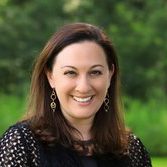03
Jun 2020
Creating Sacred Space
A church basement. A mountaintop. A coatroom converted into a classroom or a dual coatroom-classroom. An outdoor amphitheater. A school cafeteria.
What do all these random places have in common?
They’ve all been used and transformed either permanently or temporarily into Jewish holy spaces.
The question of creating Jewish space is one that always looms over each upcoming service event for our amazing Wexner Service Corps. Our unique, year-long, local, teen service and Jewish learning program is fortunate to have monthly opportunities for new interactions and fresh experiences, which also necessitates finding different spaces in which to gather together. Sometimes we do our volunteering outside: gardening, weeding, digging, building. Other times our work is indoors: sorting, stacking, organizing, serving, etc. In either case, it’s never explicitly obvious where our formal gathering will take place and whether or not it will be conducive to learning Torah and accommodating our blessedly large cohort.
As I was anticipating an exciting service event with my Wexner Service Corps teens this past fall with Habitat for Humanity, we learned that the homes we would be working on were relatively unfinished and that our work would be mainly digging pipelines outside. On a rainy and muddy day, with teens covered in dirt and sweat, I wondered where the best place to gather together might be in order to focus our learning and give a greater sense of purpose and intention to the work. While much consideration went into the decision, ultimately our group chose to meet beforehand at the KIPP Columbus school cafeteria, a school with great significance to our group and our community, and engage in a deep, empathetic, Jewish conversation in advance of our service. Although the cafeteria was large and lacked any Jewish symbols or ritual objects, our presence and learning instantly transformed the room into a holy space.
The Torah teaches us that when God instructed the Israelite people on the building of the Tabernacle, God very clearly laid out detailed plans of size, shape, materials, colors and fabrics of every single item needed to create the perfect, holy space for God to use as God’s “home-base.” God seemed to have a clear notion of what holy space needed to look, feel and even smell like to be the kind of place that the Israelites could gather in and connect with God.
And the objective was perfectly clear. God says: “And let them make Me a holy place (sanctuary) that I may dwell among (within) THEM.” (Exodus 25:8)
One might have expected the text to say essentially what Kevin Costner hears in the classic 1989 movie, Field of Dreams: “If you build it, He will come.” We might have hoped that God would say to the Israelites, “if you build the Mishkan, this holy space, just as I have indicated you should, I will come to dwell inside this space. You’ll know where to find me, because you’ve created the perfect place for me, just the way I like it.” But the text is clear. As the famous 18th century Moroccan-born Torah commentator, the Or HaChaim, noted: The text “does not say ‘within IT (the Tabernacle),’ which means that the place that God will sanctify to dwell there, is within the children of Israel…” God does not come to dwell within the place, but rather among the people who created the space.
One of my own personal goals as a leader within the Jewish community is to ensure that people know and deeply understand that Jewish space can be created wherever the community needs it to be. My friend and colleague, Rachel Arcus-Goldberg, Head of School of Columbus Jewish Day School, commented that, “sacred spaces are often sacred not because of the physical space or the artifacts in the room. Rather, they become sacred because of the experiences that we have in those spaces and the emotions they evoke. A garden is just a garden. But when you release butterflies into the garden as you remember a loved one, it becomes sacred.”
Whether we use a specific ritual to sanctify a space, an object, such as a mezuzah, to denote the dimensions, or even a blessing to infuse a sense of Divinity to a room, our intentions and our presence are what have the power to transform an ordinary location into a holy one.
Throughout this year, may each of us replace feelings of frustration with feelings of empowerment as we strive to create holy space for ourselves and our communities through our words, actions and purpose.


